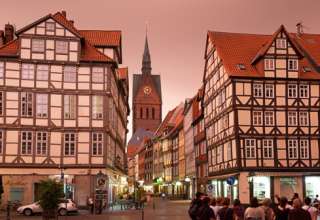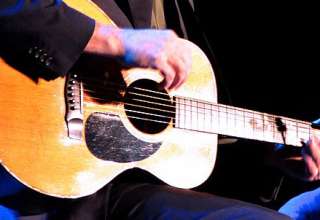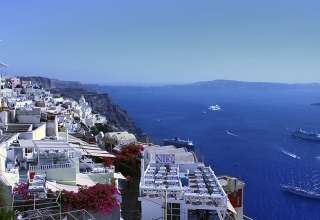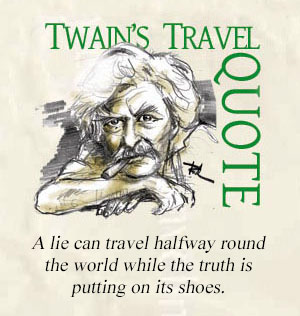E.U. May Exclude U.S. as It Reopens Borders, Citing Failures on Virus
European Union officials are racing to agree on who can visit the bloc as of July 1 based on how countries of origin are faring with new coronavirus cases. Americans, so far, are excluded, according to draft lists seen by The New York Times.
Courtesy Matina Stevis-Gridneff
BRUSSELS — European Union countries rushing to revive their economies and reopen their borders after months of coronavirus restrictions are prepared to block Americans from entering because the United States has failed to control the scourge, according to draft lists of acceptable travelers seen by The New York Times.
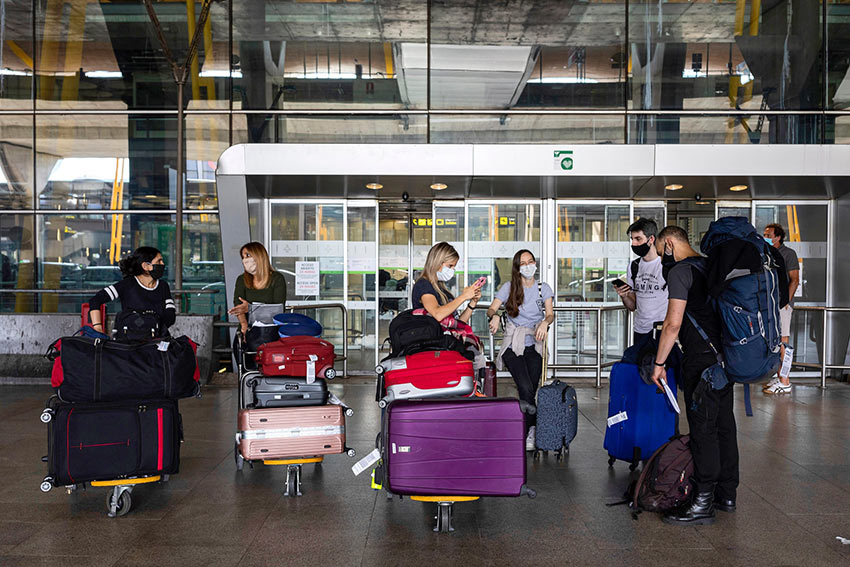
That prospect, which would lump American visitors in with Russians and Brazilians as unwelcome, is a stinging blow to American prestige in the world and a repudiation of President Trump’s handling of the virus in the United States, which has more than 2.3 million cases and upward of 120,000 deaths, more than any other country.
European nations are currently haggling over two potential lists of acceptable visitors based on how countries are faring with the coronavirus pandemic. Both include China, as well as developing nations like Uganda, Cuba and Vietnam.
Travelers from the United States and the rest of the world have been excluded from visiting the European Union — with few exceptions mostly for repatriations or “essential travel” —- since mid-March. But a final decision on reopening the borders is expected early next week, before the bloc reopens on July 1.
A prohibition of Americans by Brussels partly reflects the shifting pattern of the pandemic. In March, when Europe was the epicenter, Mr. Trump infuriated European leaders when he banned citizens from most European Union countries from traveling to America. Mr. Trump justified the move as necessary to protect the United States, which at the time had roughly 1,100 coronavirus cases and 38 deaths.
In late May and early June, Mr. Trump said Europe was “making progress” and hinted that some restrictions would be lifted soon, but nothing has happened since then. Today, Europe has largely curbed the outbreak, even as the United States, the worst-afflicted, has seen more infection surges just in the past week.
Prohibiting American travelers from entering the European Union would have significant economic, cultural and geopolitical ramifications. Millions of American tourists visit Europe every summer. Business travel is common, given the huge economic ties between the United States and the E.U.
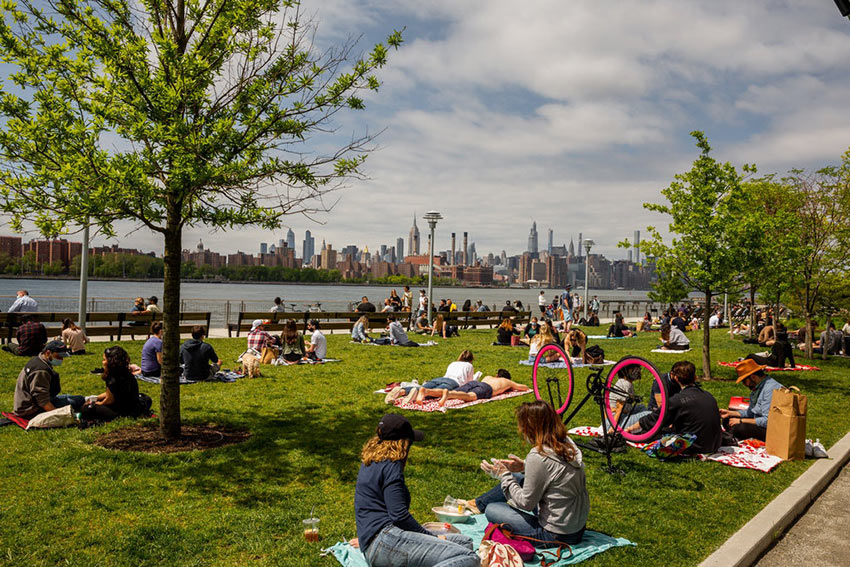
The draft lists were shared with the Times by an official involved in the talks and confirmed by another official involved in the talks. Two additional European Union officials confirmed the content of the lists as well the details of the negotiations to shape and finalize them. All of the officials gave the information on condition of anonymity because the issue is politically delicate.
The forging of a common list of outsiders who can enter the bloc is part of an effort by the European Union to fully reopen internal borders among its 27 member states. Free travel and trade among members is a core principle of the bloc — one that has been badly disrupted during the pandemic.
Since the outbreak, the bloc has succumbed to piecemeal national policies that have resulted in an incoherent patchwork of open and closed borders.
Some internal borders have practically remained closed while others have opened. Some member states that desperately need tourists have rushed ahead to accept non-E.U. visitors and pledged to test them on arrival. Others have tried to create closed travel zones between certain countries, called “bubbles” or “corridors.”
Putting these safe lists together highlights the fraught, messy task of removing pandemic-related measures and unifying the bloc’s approach. But the imperatives of restoring the internal harmony of the E.U. and slowly opening up to the world is paramount, even if it threatens rifts with close allies including the United States, which appears bound to be excluded, at least initially.
President Trump, as well as his Russian and Brazilian counterparts, Vladimir V. Putin and Jair Bolsonaro, have followed what critics call a comparable path in their pandemic response that leaves all three countries in a similarly bad spot: they were dismissive at the outset of the crisis, slow to respond to scientific advice and saw a boom of domestic cases as other parts of the world, notably in Europe and Asia, were slowly managing to get their outbreaks under control.
Countries on the E.U. draft lists have been selected as safe based on a combination of epidemiological criteria. The benchmark is the E.U. average number of new infections — over the past 14 days — per 100,000 people, which is currently 16 for the bloc. The comparable number for the United States is 107, while Brazil’s is 190 and Russia’s is 80, according to a Times database.
Once diplomats agree on a final list, it will be presented as a recommendation early next week before July 1. The E.U. can’t force members to adopt it, but European officials warn that failure of any of the 27 members to stick to it could lead to the reintroduction of borders within the bloc.
The reason this exercise is additionally complex for Europe is that, if internal borders are open but member states don’t honor the same rules, visitors from nonapproved nations could land in one European country, and then jump onward to other E.U. nations undetected.
European officials said the list would be revised every two weeks to reflect new realities around the world as nations see the virus ebb and flow.
The process of agreeing on it has been challenging, with diplomats from all European member states hunkering down for multiple hourslong meetings for the past few weeks.
As of Tuesday, the officials and diplomats were poring over two versions of the safe list under debate, and were scheduled to meet again on Wednesday to continue sparring over the details.
One list contains 47 countries and includes only those nations with an infection rate lower than the E.U. average. The other longer list has 54 countries and also includes those nations with slightly worse case rates than the E.U. average, going up to 20 new cases per 100,000 people.
The existing restrictions on nonessential travel to all 27 member states plus Switzerland, Norway, Iceland and Liechtenstein were introduced on March 16 and extended twice until July 1, in a bid to contain the virus as the continent entered a three-month long confinement.
“Discussions are happening very intensively,” to reach consensus in time for July 1, said Adalbert Jahnz, a spokesman for the European Commission, the bloc’s executive branch. He called the process “frankly, a full-time job.”
The E.U. agency for infectious diseases, the European Center for Disease Prevention and Control, warned negotiators that the case numbers were so dependent on the level of truthfulness and testing in each country, that it was hard to vouch for them, officials taking part in the talks said.
China, for example, has been accused of withholding information and manipulating the numbers of infections released to the public. In parts of the developing world, case numbers are very low, but it’s hard to determine whether they paint an accurate picture given limited testing.
And in the United States, comments made by President Trump at a rally in Tulsa over the weekend highlighted how easy it is to manipulate a country’s case numbers, as he suggested that domestic testing was too broad.
“When you do testing to that extent, you’re gonna find more people you’re gonna find more cases. So I said to my people slow the testing down, please,” Mr. Trump told supporters.
European embassies around the world could be enlisted to help verify or opine on the data provided that would inform the final list, negotiators said, another indication that the list could end up being quite short if European diplomats at embassies said reported numbers were unreliable.
Many European Union countries are desperate to reopen their borders to visitors from outside the region to salvage tourism and boost airlines’ revenue while keeping their own borders open to each other. Some have already started accepting visitors from outside the bloc.
At the other extreme, a few European nations including Denmark are not prepared to allow any external visitors from non-E.U. countries, and are likely to continue with this policy after July 1.
Germany, France and many other E.U. nations want non-European travelers to be allowed, but are also worried about individual countries tweaking the safe list or admitting travelers from excluded countries, officials said.
Monika Pronczuk contributed reporting from Brussels, and Albert Sun from New York.
The Maya Ruins at Uxmal Still Have More Stories to Tell
By Elizabeth Landau; courtesy smithsonianmag.com
The remains of a provincial capital on the Yucatan Peninsula attest to a people trying to fortify their place in the world
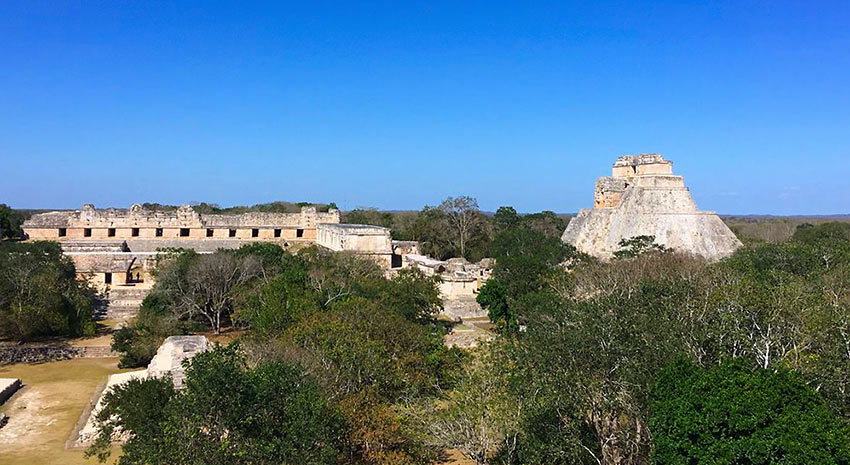
As the sun sets over the Yucatan jungle, its fading light falls on the western staircase of the Pyramid of the Magician, just as it has for more than a millennium. In pre-Hispanic times, on Maya religious holidays, a priest or ruler might ascend these stairs to pass through the gateway to a holy temple — or, as historian Jeff Kowalski writes in Encyclopedia of the Ancient Maya, “a cave portal to a sacred creation mountain.” Watching from the plaza below, the commoners may have seen a leader emerging from this ornate doorway as a manifestation of the planet Venus, or as the sun itself.
More than a four-hour drive from the spring break cliché of Cancun, the Maya ruins of Uxmal (pronounced oosh-mawl) preserve the grandeur of what was. The second-most visited archaeological park in Mexico (before the COVID-19 pandemic), Uxmal was a seat of power in the Puuc region, the low range of hills in the otherwise flat grasslands of the Yucatan. Its ruins contain ornate carvings, friezes and sculptures embedded in the architecture, but at some point in the 10th century, construction on this thriving city stopped, and before the Spanish came, the Maya left.
“At Uxmal the last buildings, such as the Nunnery Quadrangle, and House of the Governor, the House of the Turtles, and the later upper temples of the Pyramid of the Magician, all display a kind of superlative finished cut stonework that, I guess you would say, that is some of the finest architectural sculpture found in the ancient Maya world, particularly sculpture made from cut stone,” Kowalski says.
The dates of Uxmal’s eventual abandonment are unknown and controversial, although the Maya likely stayed there longer than in their southern cities, which fell beginning in the 9th century. Kowalski thinks Uxmal was no longer an active political capital in the region by about 950 A.D., though some scholars say a centralized government continued deeper into the 10th century or later.
Modern archaeologists still study the site’s exquisite ruins, including the storied pyramid, the grand House of the Governor, and others to figure out how the Maya adapted to changing threats from enemies and the natural environment. Uxmal continues to surprise and to offer new hints about what life was like there more than a millennium ago.
The Jewel of the Puuc
Since around 1000 B.C., people speaking variants or dialects of Mayan languages have been living in parts of Mexico, Guatemala, Belize and Honduras. The Maya created a distinctive system of hieroglyphic writing. Attuned to astronomy, they used the movements of the moon, sun and planets in the development of a calendar system based on cycles. (This included the famous Long Count cycle that concluded on December 21, 2012, and gave rise to the modern rumor that the world would end on that day. It did not.)
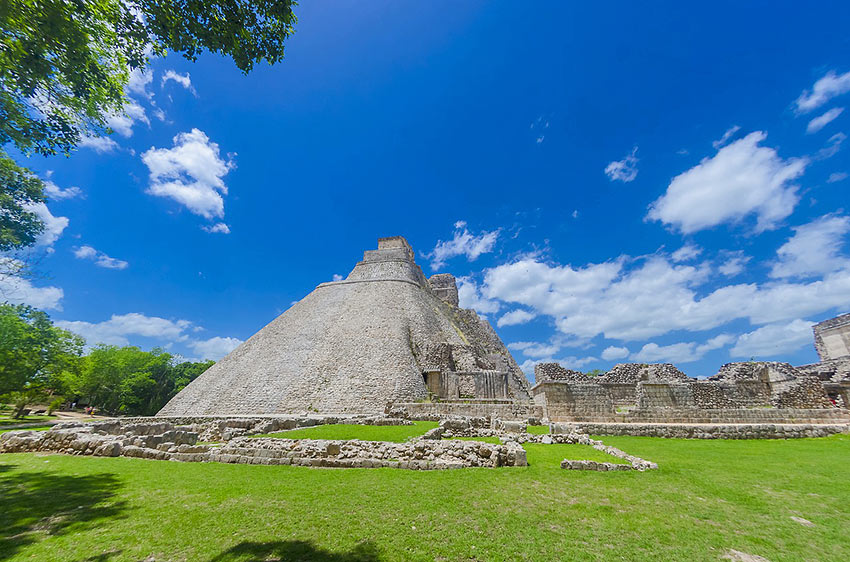
No one knows when the Maya first settled in Uxmal. A legend tells of a magician-dwarf who built the Pyramid of the Magician overnight, but hard evidence from the earliest temple suggests construction began around the 6th century A.D. and continued expanding the city thereafter. The city would become the center of life for the Maya of the Puuc.
Maya thrived in Uxmal for centuries because of favorable environmental conditions. In its heyday, the city enjoyed more rainfall and richer soil than in the rest of the northern Yucatan. It prospered in agriculture, allowing the people here to cultivate the raw materials for its signature buildings.
“That also explains to us the presence of a very beautiful architecture,” says José Huchim, director of the Archaeological Zone of Uxmal and the Puuc Route. “It is a very rich region. That led to control, confrontation and also the construction of a wall that would protect it from the enemy.”
That enemy came from the northeast.
Defending the City
Uxmal probably reached the height of its power in the 8th and 9th centuries under a ruler researchers call Lord Chac, known also as Chan Chak K’ak’nal Ajaw (his name reflects that of the Maya rain god, Chac). Ruling at the turn of the 10th century, Lord Chac appears to have commissioned construction on Uxmal buildings such as the House of the Governor, a titanic endeavor that would have required 1,200 workers laboring for 33 years to construct the palace and its large supporting platform. It has a two-headed jaguar throne on a platform in front, a carved lattice pattern symbolizing rulership and representations of Lord Chac’s rain god namesake. A sculpture of Lord Chac himself, surrounded by two-headed serpents, stands above the central doorway.
In 2019, Huchim and archaeologist Lourdes Toscano, who together direct the Uxmal Project, focused on excavating the area under the large platform that supports the palace. In December 2019, they announced their team had found two arches, one about 21 feet high and another about 24 feet, demarcating an 82-foot-long passageway under the top part of the building. Austere and characterized by fine cuts in limestone, these arches could pre-date the grander palace structures by as much as 200 years.
Their findings indicate the palace, likely used for residential or administrative purposes, or both, was originally built as three separate buildings. Later, the Maya built vaulted passageways to unite them at the basement level. The passageway united the three foundations now covered by a platform, with stairs on all four sides providing access to the upper part of the building. The Uxmal elite closed off the three staircases in the basement and the main stairway as a means of protection, giving invaders fewer access points. (The excavators are also restoring the city’s defensive wall built around this time.)
Why go to this trouble? The team’s working hypothesis is that as the 9th century came to a close, so did mounting political pressure from Chichen Itzá, a Maya city known today for its photogenic step pyramid. The similarity in iconography and architecture found in some buildings at both sites suggest at least a brief alliance between the two kingdoms in the later ninth to early 10th century. But some historians believe the construction of buildings like the grand palaces stopped because Uxmal was conquered by the rulers of Chichen Itzá in the 10th century.
Other Maya sites such as nearby Kabah show signs of rituals that involve “taking the soul out of the buildings” that will not be used anymore by destroying parts of them, Toscano notes. In Uxmal, the Maya may have similarly deliberately cut the heads off of sculptures when they were leaving, which may explain why Lord Chac’s head in a sculpture found at the House of the Governor is missing.
The Maya Are Still Here
Water powered Uxmal’s rise, but lack of water caused its fall.
With no natural bodies of water to tap, people of the Uxmal region made or modified basins called aguadas for collecting fresh rainwater to prepare for dry seasons, sometimes increasing their water capacity by digging bell-shaped pits under them called buktes, which were with stone. They also made bottle-shaped storage tanks called chultunes, allowing them to stock up with 2 to 5 million cubic meters of water from falling rain. Thanks in part to this aquatic prowess, Kowalski estimates that at its peak Uxmal may have had 15,000 to 18,000 inhabitants, but other sources put it as high as 25,000 people; Huchim says even up to 35,000. Smaller Mayan sites whose ruins have been discovered, like Kabah, Sayil and Labna, were under Uxmal’s control at its peak.
However, most historians agree that drought ultimately prompted the Maya to leave Uxmal and other Puuc centers for good. Shortages of rain would have strained the drinking water supply for the people of Uxmal and made it difficult to grow crops like beans, corn and squash. Deforestation may have also played a role. The Maya felled trees to make crop fields and produce the lime for building materials, Huchim says, and they also modified the soil for use in construction. While the fall of Maya civilization has been a longstanding mystery, factors including climate changes and the transformation of their environment seem to have been important drivers of decline.
Even so, the spirit of Uxmal runs deep in Huchim. His grandfather Nicolas was in charge of keeping the Uxmal site clean and helping archaeologists restore the monuments from 1940 to 1970. His father grew up at the site and also became its official guardian. As a child, Huchim watched the restoration of the Pyramid of the Magician every morning from 1969 to 1970. Since 1992, Huchim has been in charge of studying, maintaining and operating the archaeological site. He saved the pyramid after Hurricane Gilbert structurally damaged it in 1997.
He treasures being one of few people experiencing the revival of Uxmal’s “ancestral” flora and fauna. Huchim wrote recently in the Mexican newspaper La Jornada Maya that in the absence of tourists, a variety of indigenous animals have reclaimed their place at the archaeological site. He hears “a great concert” of birds singing and sees groups of dozens of iguanas congregating. Turkeys and deer, which his father had told him were once common, now populate the site and he can hear the sound of an anteater at nightfall. “One can perceive floating in the environment the spirit of the Mayan culture,” Huchim wrote.
He’s been looking out for damage from a recent fire, carrying out maintenance and cleaning endeavors, and working on a report about the archaeological project. The civilization that built these structures is long gone, but Huchim is one of 7 million people of Maya descent living in places like Mexico, Guatemala, Honduras, Belize, El Salvador, Nicaragua and Costa Rica.
“The Maya do not die, they do not end. We are alive. What’s more, we have a large population,” says Huchim, “I am Mayan, but we don’t build pyramids today.”
This Sculpture Takes the Great Barrier Reef’s Temperature
By Alex Fox; courtesy smithsonianmag.com
‘Ocean Siren’ changes colors in real time to reflect ocean temperatures at Davies Reef, part of Australia’s ailing Great Barrier Reef
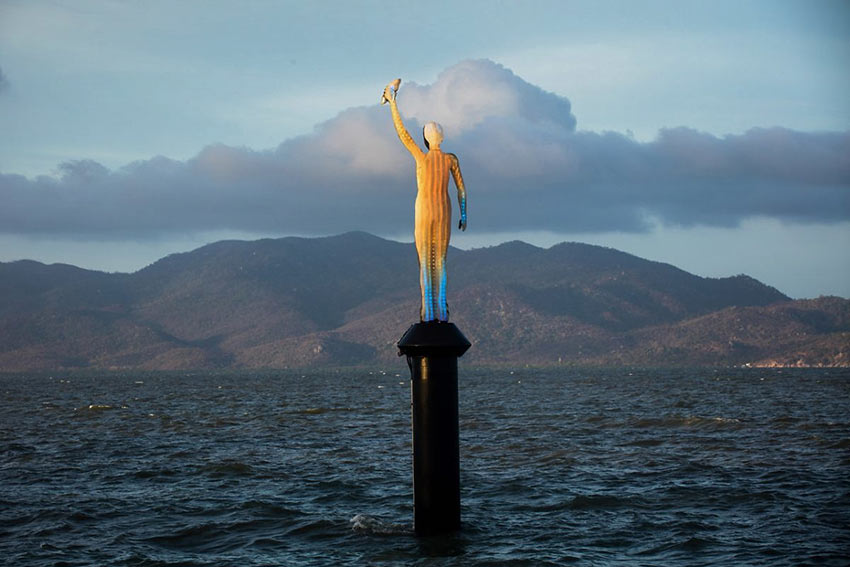
Standing more than 12 feet tall above the water in Townsville, Australia, an illuminated outdoor sculpture transforms the planet’s rising ocean temperatures into a colorful display, reports Katie Dundas for Atlas Obscura.
The sculpture is modelled after Takoda Johnson, a local student and descendent of Australia’s indigenous Wulgurukaba people. The sculpture looks out across the water, holding a shell high above her head.
The piece’s noble posture and vibrant colors belie the grim reality it represents. When the sculpture, called Ocean Siren, lights up in pinks and reds, that means a weather station some 60 miles away at Davies Reef on the Great Barrier Reef detects above average daily water temperatures.
Unusually warm water might sound innocuous or even pleasant, but, for the corals that form the backbone of the roughly 3,000 individual reefs that make up the Unesco World Heritage Site, warm can be deadly.
In April, a marine heatwave caused the third mass coral bleaching event in the last five years. A full quarter of the Great Barrier Reef suffered severe bleaching—which means more than 60 percent of the reef’s corals ejected their symbiotic zooxanthellae algae — changing from a kaleidoscope of colors to bone-white, reports Graham Readfearn for the Guardian. It was the most widespread bleaching event ever recorded on the world’s largest living structure.
Ocean Siren’s colors reflect the ocean’s temperature in real time, going from dark blue to dark red. Speaking with Atlas Obscura, the sculpture’s creator Jason deCaires Taylor says, “I think part of what’s happening in our underwater world is that it’s sort of forgotten and misunderstood… It’s out of sight… Yet major changes are happening, and major ecosystems are being lost. So, I wanted to bring that threat right in front of our faces… and to convey in real time what’s happening.”
First installed in 2019, Ocean Siren was the first piece of Queensland’s new Museum of Underwater Art (MOUA) to be installed and the only one visible above the ocean surface. Now, the first of the museum’s three underwater sculpture gardens is finished and, once COVID-19 restrictions are lifted, ready for wildlife, snorkelers and divers to visit, reports India Block of dezeen.
The underwater sculpture, called the Coral Greenhouse, is made of pH-neutral cement compounds and corrosion resistant 316 Stainless steel, according to a statement. The choice of materials is meant to encourage the artwork’s colonization by corals and other marine creatures. The Coral Greenhouse is around 60 feet underwater and is anchored to the sandy, flat bottom in an inlet of John Brewer Reef by huge slabs of concrete, according to Antonia Wilson of the Guardian.
The stainless-steel beams form an A-frame structure that deCaires Taylor tells the Guardian provides “minimal resistance to wave energy, while providing an ideal surface for filter-feeding organisms and schooling fish to congregate.” Inside the underwater structure, the artist’s signature human figures sit and stand along workbenches replete with nooks and crannies that fish and crustaceans might use as refuge from predators.
“As the Coral Greenhouse is slowly colonized and built upon by the reef, it will be gradually absorbed into its surroundings,” deCaires Taylor tells dezeen. To give the artwork a head start, parts of it have been seeded with coral plantings, per dezeen.
According to the Guardian, deCaires Taylor has created unique underwater sculptures all over the world, including Grenada, Mexico, Lanzarote and the Bahamas. Additional installations for Australia’s MOUA are planned for 2021 at Queensland’s Palm Island and Magnetic Island, per MOUA’s website.
In an interview with Atlas Obscura deCaires Taylor says he hopes his underwater sculptures help people understand that, “what happens in the sea affects us directly, and affects our livelihoods, and the future of our species. And I think [one] of the best ways to inspire people is to show them how incredible it is — and how important it is to continue to conserve it.”



